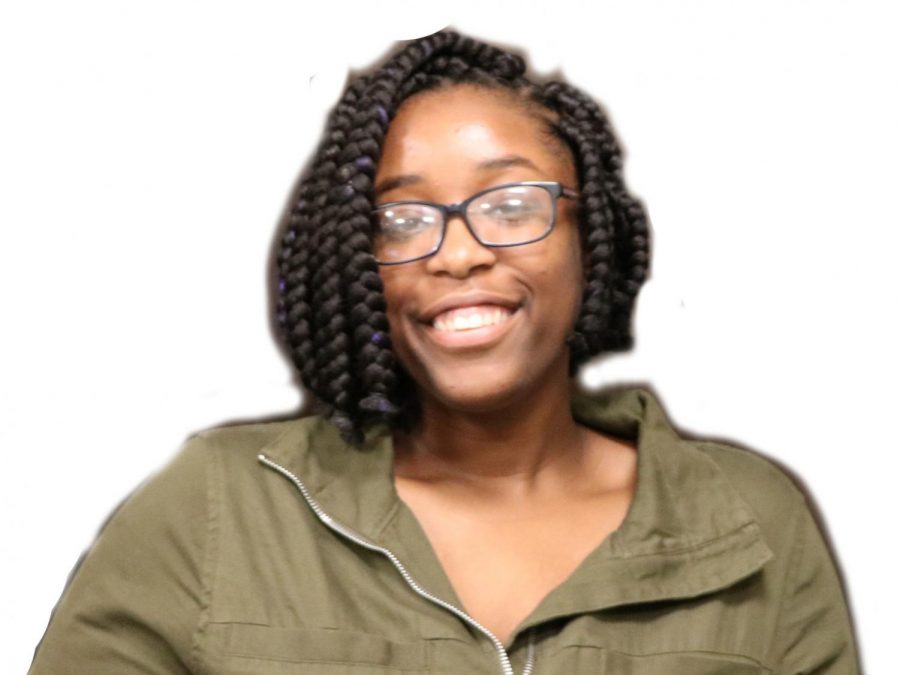All colors of a monochromatic rainbow
April 26, 2019
Just a couple months ago, I attended the Black Caucus Honor Roll breakfast. As I sat and watched the hosts call up all of these black students for honor roll in each grade, I couldn’t help but feel a surge of pride for my fellow black students. But, I couldn’t help but notice that with each passing category as the number of students had decreased, the final ‘stage call’ held mostly all lighter skinned African American women. My surge of pride was a bit short-lived. I was happy that these girls had gotten the recognition that they deserved, but I was searching for some representation of me, meaning a darker black woman. Although in recent years the representation of girls that look like me has sky-rocketed, there is still a lot of work to be done.
As most simply put by one of my teachers, “colorism is one of those all squares are rectangles, but not all rectangles are squares,’ kind of things.” This essentially means that all colorism is racism, but not all racism is colorism. Now, when you look up colorism in many dictionary outlets, you won’t find a definition. Just goes to show how this conversation is long overdue.
Colorism, according to Wikipedia, is “prejudice or discrimination against individuals with a dark skin tone, typically among people of the same ethnic or racial group.” Lori. L Tharpe, associate professor of journalism at Temple University and author of Same Family, Different Colors, describes more the nature of colorism: “In this country, because of deeply entrenched racism, we already know that dark skin is demonized and light skin wins the prize.” This topic of colorism is one that is often too prominently shown in the media but still rarely talked about.
According to Tharpe, the term colorism is most often attributed to author and activist Alice Walker, first appearing in her 1983 book In Search of Our Mothers’ Gardens. In an essay from that book, Walker defines colorism as “prejudicial or preferential treatment of same-race people based solely on their color.”
Colorism is predominantly shown in different ethnic groups, almost always benefiting the lighter person of the race — for example, a lighter biracial African American woman versus darker skinned African American woman in the black community.
Amanda Flowers, a biracial- African American & Belizean sophomore, says that she feels more privileged because of her skin color.
“I feel like being light-skin makes me more reasonable for white people to talk to,” she admitted. “Or because they feel safer with me because I’m closer to their skin complexion.”
This happens in other communities as well. Mario Leon, a member of the LatinX community, happens to be a ‘passing’ Mexican sophomore. ‘Passing’, is an informal term meaning the person of color being described can ‘pass’ for white because of their lighter skin color.
“When I tell people I’m Mexican, they’re shocked,” he explains. “People assume I’m white, and I receive white privilege,” he continues. “My sister is also light like me and receives the same treatment. It’s irritating to receive unwanted privilege and to be consistently questioned of your race. I’m Mexican, and only Mexican.”
Brown-skin and dark-skin black girls have often been conditioned from birth to act a certain way to avoid that label of the angry black woman.To lower our volume, and often not say what’s on our minds. In freshman year, an old acquaintance told me I was being ‘too’ loud, and by my volume, I was being the dumb, sterotypical black girl. I asked him what my volume had anything to do with that stereotype, and he replied with, “They’re going to think you’re uneducated and ghetto.” While this particular acquaintance was a biracial African American male, and was seemingly ok with how loud he was, (even though he attracted countless librarians about his tone,) he still felt the need to call me out on it, a darker African American female. To this day, I still don’t know if I was more offended by the blatant racism or sexism in his request of my silence, but I know that from that point on, I didn’t quiet down.
Many people look for biracial women to express the hardships of being a black woman as well. As Flowers summed up earlier, “being light-skin makes white people feel more comfortable.” The media often opts for lighter skin black representatives than darker skin tones to advocate for black rights and only let white people feel more comfortable while hearing the harsh truth of colorism.
There is still a certain harm in that when you only see lighter people speaking up about your rights.
Alana Stone, who identifies herself as a darker-skinned Jamacian sophomore who was also at the Honor Roll breakfast and was recognized for her honor roll of a 4.0+ GPA, expressed her uncomfortability with the speech as well. “It was an achievement for black students,” she explained. “I felt like them having some type of white in them and receiving more acknowledgements than other students wasn’t fair.”
Conversations regarding colorism needs to be discussed in all minority communities. We should start bringing all varying skin tones to the table to talk about issues as a whole. People with lighter skin need to address their privilege before speaking about oppression. The basis of this article was not to deny somebody of their ‘Blackness,’ ‘Asianness,’ or ‘Latinness’ but to simply address the fact that people who do come from those communities, and have lighter skin, benefit from historic privilege, whether they are conscious of it or not.




















